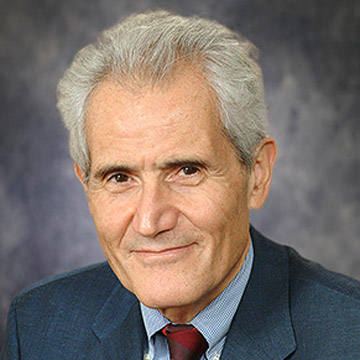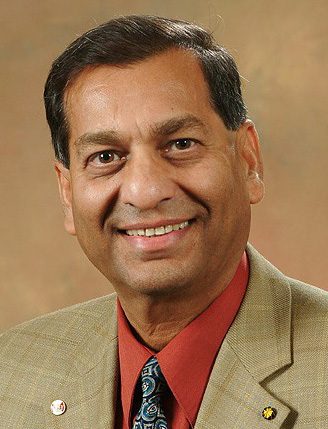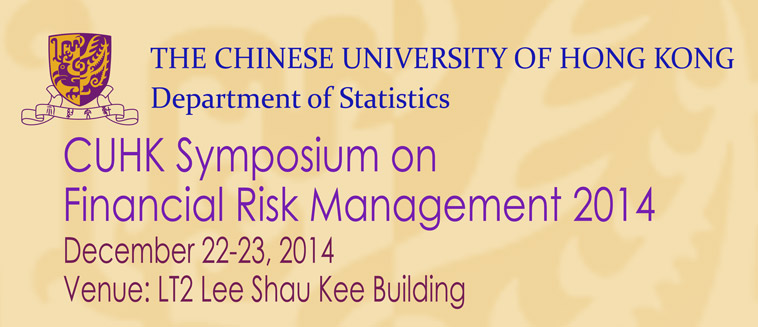| Title: Dynamic Programming in Mathematical Finance Abstract: Mathematical Finance has introduced new type of stochastic control problems. In this context, the martingale method has been used to solve them. This gives the impression that probabilistic techniques are the only way to obtain a solution. We want to show that purely analytical techniques can be used for the same result. Not only it is useful to have additional techniques, but also analytical techniques allow for more constructive solutions. In particular, one does not need to rely on the martingale representation theorem to construct optimal stochastic controls. We will discuss the concepts and the main techniques. Two models will be considered, the classical consumer-investor model and a model describing the choice of projects for an entrepreneur. A credit risk problem will be solved in this framework.
|
 Alain BENSOUSSAN
|
| Title: A model of liquidity risk and a new class of systemic risk measures Abstract: We propose a new class of systemic risk measures which we illustrate on a simple Gaussian model of inter-bank borrowing and lending arising as an equilibrium of a stochastic game. In this game each bank controls its rate of borrowing/lending to a central bank. The optimization reflects the desire to borrow when its monetary reserve falls below a critical level or lend if it rises above this critical level which is chosen here as the average monetary reserve. Borrowing from or lending to the central bank is also subject to a quadratic cost at a rate which can be fixed by the regulator. We solve explicitly for Nash equilibria with finitely many players, and we show that in this model the central bank acts as a clearing house, providing liquidity to the system without affecting its systemic risk. Using our proposed systemic risk measure, we compare a fully connected symmetric network of banks with a symmetric centrally connected one. Joint work with R. Carmona and L.H. Sun on stochastic games, and with F. Biagini, M. Frittelli, and T. Meyer-Brandis on systemic risk measures.
|
 Jean-Pierre FOUQUE |
| Title: The optimal consumption-investment problem --
a personal journey Abstract: I present a historical account of my personal journey in connection with the optimal consumption-investment problem that began in 1971. It will highlight the extensions that were made along the way together with some remarkable editorial reviews. The personalities encountered during this journey, directly or indirectly, are among the who's who in mathematical finance. I will conclude with some open research problems that remain.
|

Suresh P. SETHI
|
| Title: Bridge Simulation and Estimation for
Multivariate SDEs Abstract: New simple methods of
simulating multivariate diffusion bridges, approximately and
exactly, are presented. Diffusion bridge simulation plays a
fundamental role in simulation-based likelihood inference for
stochastic differential equations. By a novel application of
classical coupling methods, the new approach generalizes the
one-dimensional bridge-simulation method proposed by Bladt and
Sørensen (2014) to the multivariate setting. A method of simulating
approximate, but often very accurate, diffusion bridges is proposed.
These approximate bridges are used as proposal for easily
implementable MCMC algorithms that produce exact diffusion bridges.
The new method is more generally applicable than previous methods
because it does not require the existence of a Lamperti
transformation, which rarely exists for multivariate diffusions.
Another advantage is that the new method works well for diffusion
bridges in long intervals because the computational complexity of
the method is linear in the length of the interval. The usefulness
of the new method is illustrated by applications, in particular
Bayesian estimation for the multivariate hyperbolic diffusion model.
|
Michael SØRENSEN |
| Title: Rank Dependent Utility and Risk
Taking Abstract: We analyze the portfolio choice problem of investors who maximize rank dependent utility in a single-period complete market. We propose a new notion of less risk taking: choosing optimal terminal wealth that pays off more in bad states and less in good states of the economy. We prove that investors with a less risk averse preference relation in general choose more risky terminal wealth, receiving a risk premium in return for accepting conditional-zero-mean noise (more risk). Such general comparative static results do not hold for portfolio weights, which we demonstrate with a counter-example in a continuous-time model. This in turn suggests that our notion of less risk taking is more meaningful than the traditional notion based on holding less stocks. This is a joint work with Xue Dong He and Roy Kouwenberg. |
 Xunyu ZHOU |

